- Joined
- Dec 13, 2015
- Messages
- 142
- Reaction score
- 482
History
In 1895, a Portsmouth chamois tanner named Walter G. Hutchings walked from the south-west of England all the way to Sawston, Cambridge, looking for work, finding it at Thomas Evans. It wasn’t long before the industrious Mr. Hutchings teamed up with the equally driven Mr. Harding to start their own business.
Messers Hutchings & Harding continued their partnership through the First and Second World Wars. Walter, being a distinguished citizen in the local community, took on a young evacuee during the Second World War named Barry Ettling, the youngest son of Ernest Ettling, a salesman for the distinguished Sir James Garner’s Skiver Tannery in London, until he was old enough to enlist in the Royal Navy fleet air arm. The two families became close and, at the end of the War, upon Walter Hutching’s retirement, the Ettlings bought the business and moved from London.
Under the guidance of Barry Ettling the business rapidly expanded to become the leading chamois leather producer. Erecting new buildings, installing modern technology and the latest IT, he equipped the tannery to compete in world markets. Now the tradition continues with Thomas Ettling succeeding his grandfather and then father, John, to oversee the manufacture of the world’s leading chamois leather.
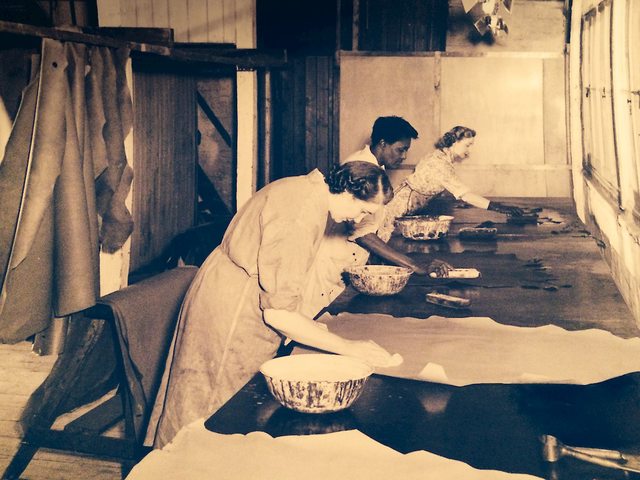
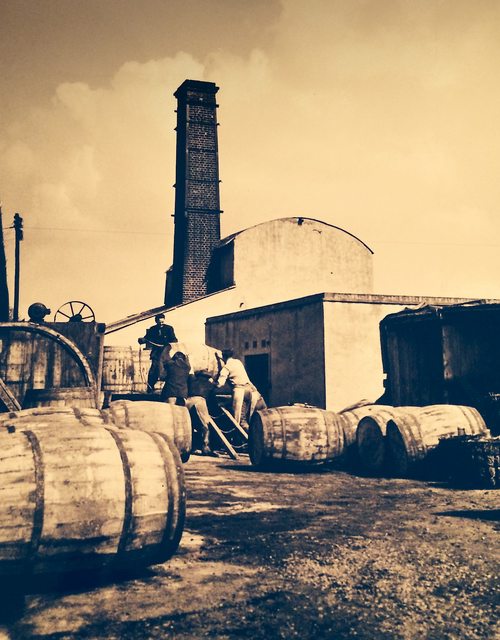
A building in the village which has caused comment and discussion over decades is the leather drying shed at Hutchings & Harding. While unsightly, it is a reminder of the bygone industrial history of the village. Sawstonians have been both dismayed and perplexed by its disintegration over the decades. Why not either make it useable or pull it down?
John Ettling, the managing director of Hutchings & Harding, was very willing to recount his thirty-year struggle to get matters resolved. By the time his father bought the site in 1976 in order to re-house his own expanding leather business in Portobello Lane, drying sheds of this construction were no longer used by the industry. The building was already very dilapidated and in a dangerous condition; it swayed in the wind. Moreover, its construction, even rebuilt from scratch, would not meet modern health and safety standards: it is a fire hazard; it has no foundations and no windows; and the original joints holding the cheap softwood construction together have always required additional metal props on the outside.
The shed was Grade 2 listed in 1986 because it was over a hundred years old. Mr. Ettling appealed this as it was collapsing and had no modern purpose – the ceilings are only five feet eight inches high. The appeal was turned down and English Heritage has always insisted that it should be rebuilt to its original condition. At considerable cost Mr. Ettling twice got architects to draw up reconstruction plans to render the building safe and usable by, for example, putting in metal supports internally or keeping the facade and constructing a usable building inside it. Both plans were turned down because they compromised the original structure; separate access to the site from the Tannery Road side was refused and as the other side is an industrial site it is completely inaccessible to the general public.
In 1990 Mr. Ettling offered English Heritage the opportunity to either take the shed down to reconstruct elsewhere or to take it on themselves. They declined. In 2003–4 the Industrial Buildings Preservation Trust showed an interest but declined to buy the shed for £1 because it is not in their remit to take on non-viable buildings. Grants have been unavailable to the tannery as a commercial enterprise, the site even being elevated to Grade 2* in the expectation of a grant being awarded. Mr. Ettling has had two structural surveys carried out on the shed (another expensive exercise) and both reports recommended demolition – the then Department of Employment stating it would be unsafe under the factory act because of its construction. The parish council agreed to the latest of these recommendations for demolition but was overruled by the county council and English Heritage because it has not been up for sale for long enough. Anyone game? The listing regulations mean that the whole site is now Grade 2 listed and many of the other buildings are in a similar perilous state, having been built as cheaply as possible at the time. They have either no foundations or just wooden beams placed directly on the soil, once a common practice; some are tilting. What will become of it? The irony is that when Mr. Ettling sold the Portobello Lane site, he applied for permission to make the site residential but this was turned down in favour of keeping a new tanning industry in the centre of the village; now the district council is considering the use of green belt for housing.
Sawston Scene
www.chamois.com
The Explore
After a long night celebrating a close friends 30th birthday, I found myself a bit worse for wear, off on a drunken walk. After the recent passing of my mother, I have had a lot on my mind and find walking therapeutic, so with my Mrs tucked up in bed it was off into the night (early morning really) for an adventure. In all honesty, the Tannery wasn’t my original destination however on my way back from the 4 mile round trip to the petrol station for a Chicken and Bacon sandwich (what was I thinking!?), I couldn’t resist a nose about.
This site has always held my interest, an old complex of buildings steeped in traditional leather processing; the building I was most interested in was the drying shed. Looming over the area I hung about at as a kid, it has always intrigued me, and with the amount of “DANGER KEEP OUT” signs hung on it, it must be interesting right? It’s worth noting that this is an active site with a few derelict buildings dotted about which was subject of conversation that night; Is exploring abandoned buildings really Urban Exploration, or do the buildings need to be occupied? (Does this count Henry?). So after strolling in and immediately setting off every security light within a 100m radius, I figured this wouldn’t last long, but full of Dutch courage I cracked on anyway. I quickly found where security was by following the sound of the obnoxiously loud TV, so I avoided that area for a while to get some pictures. The drying shed looked incredibly sketchy close up, how it is still standing I don’t know, even in my inebriated state, I knew I shouldn’t hang about there for long. So after over 2 hours of wandering, I decided it was time to meet security so I tried to find a way into the building he was in but couldn’t. Around that time, my Mrs rang me to ask where the f@*k I was and I thought it was hilarious that she could hardly hear me over the sound of the Security Guard’s T.V.
Here are the pictures, they’re not the best but I had drunk the majority of a bottle of rum and by the looks of it, my lens needs a good clean:

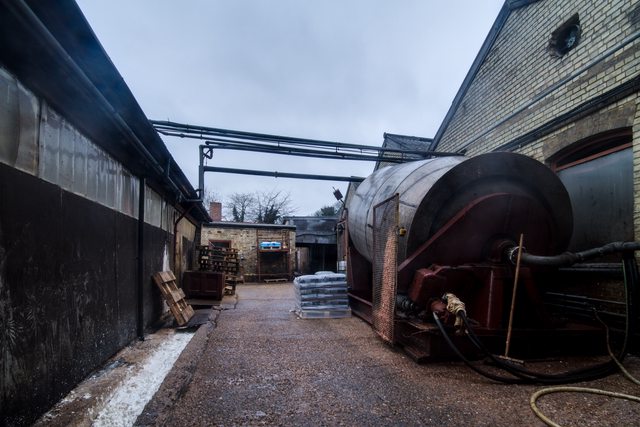
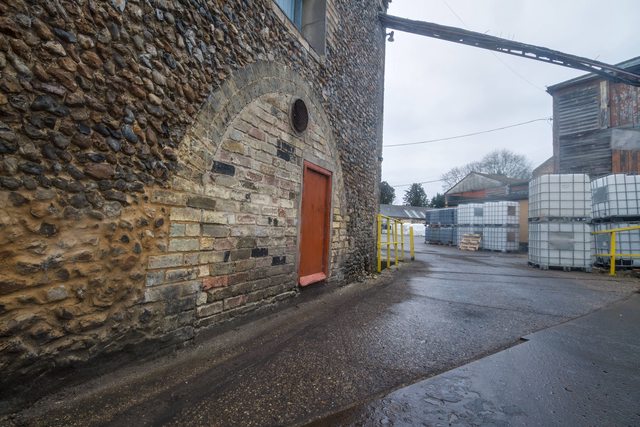
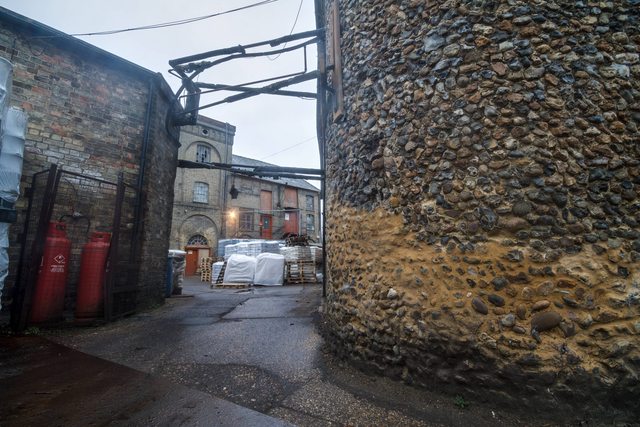

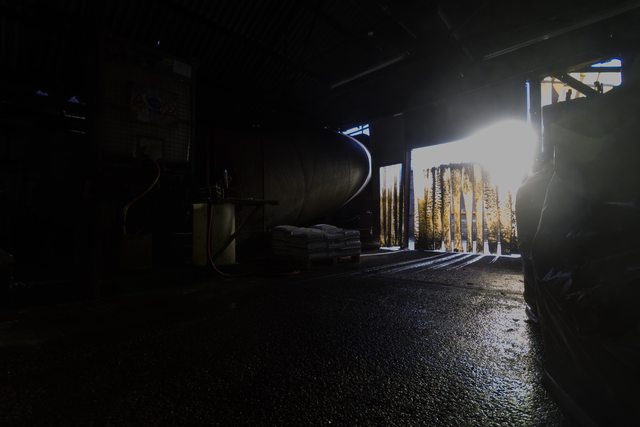
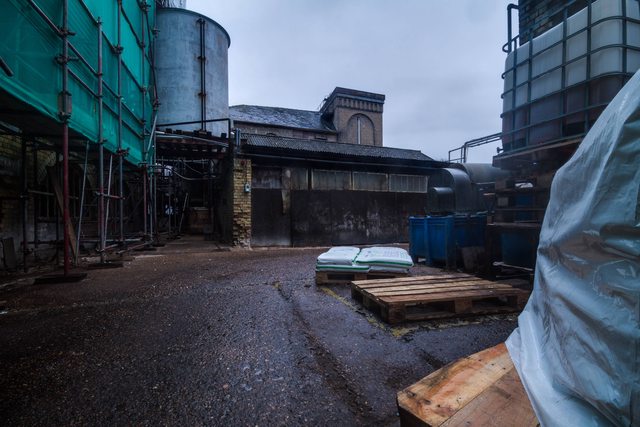

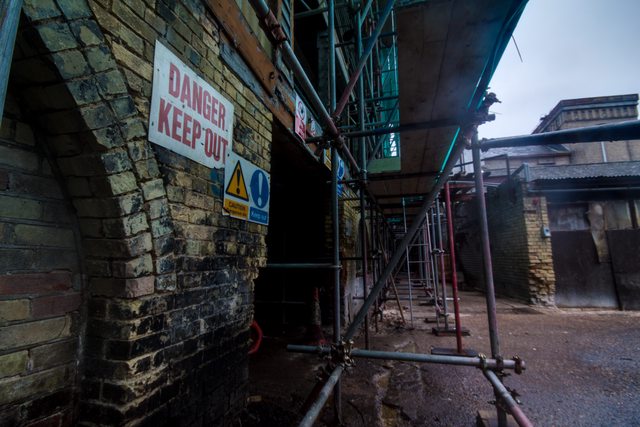
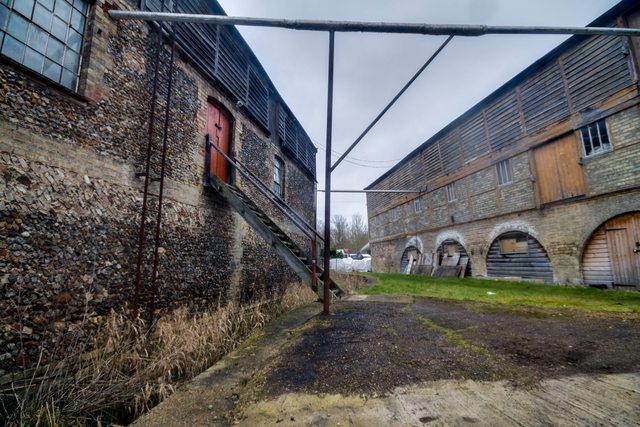
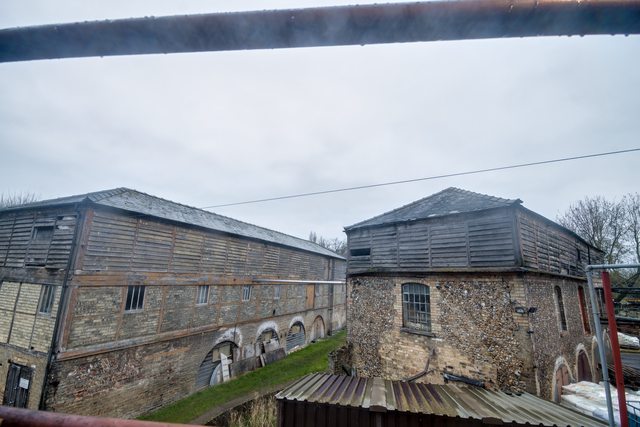
Standing outside security.
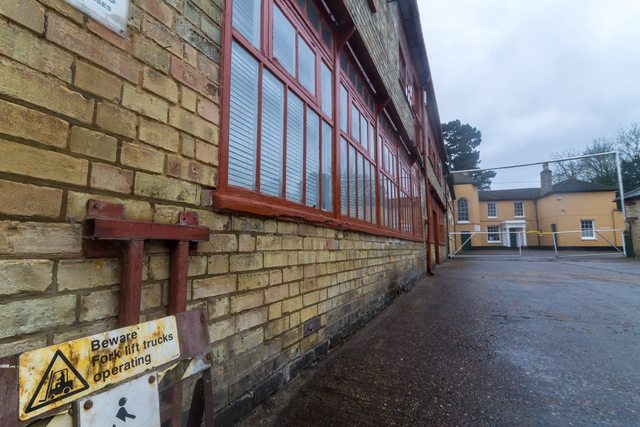
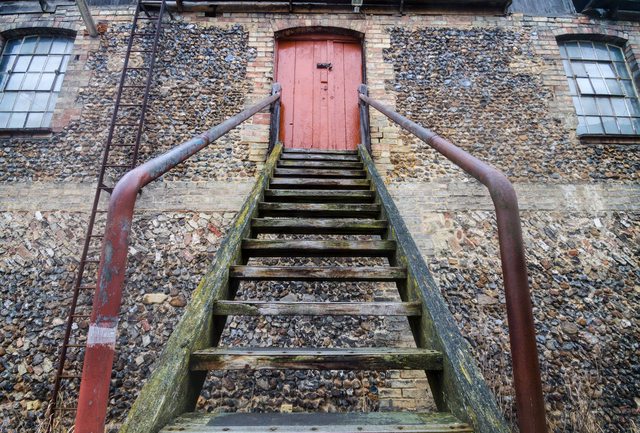
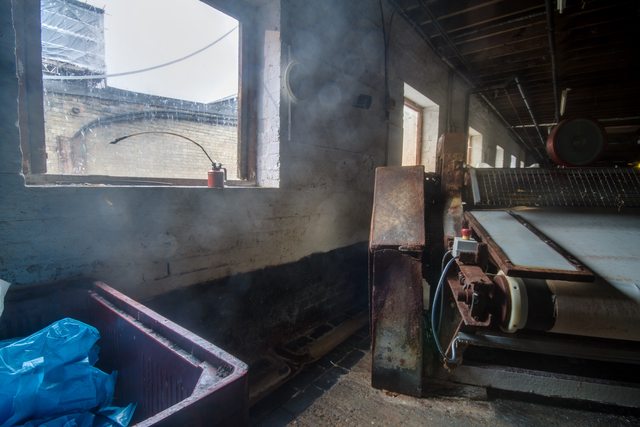
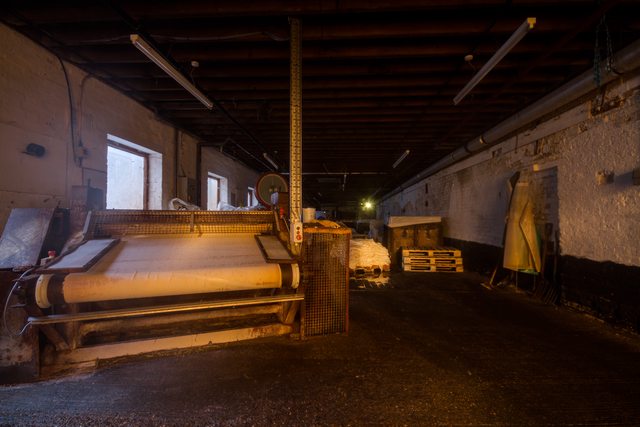
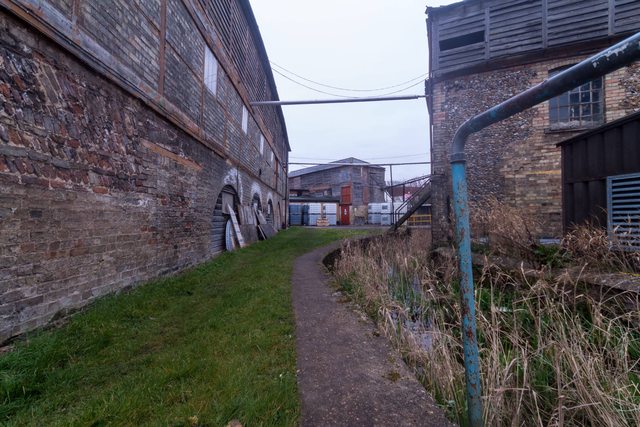
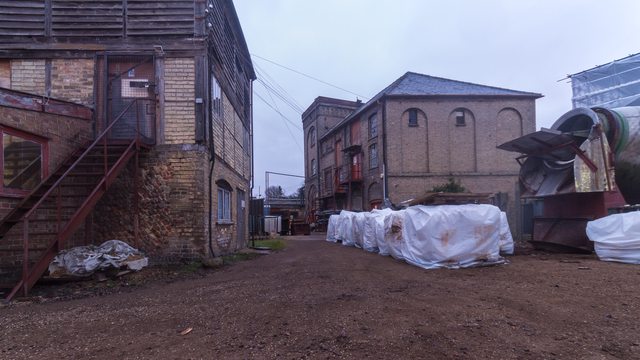
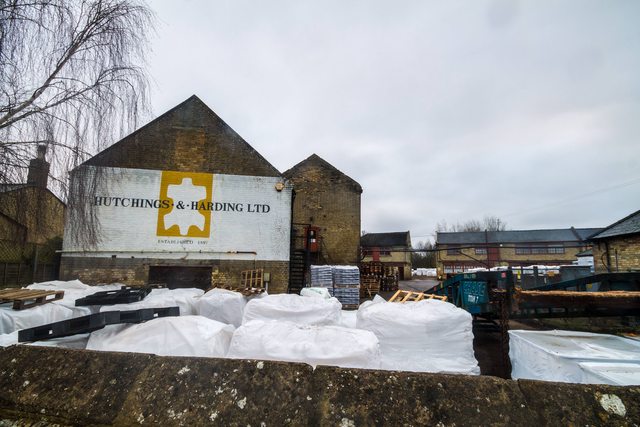
Definitely worth a sober re-visit. My head still hurts…..
In 1895, a Portsmouth chamois tanner named Walter G. Hutchings walked from the south-west of England all the way to Sawston, Cambridge, looking for work, finding it at Thomas Evans. It wasn’t long before the industrious Mr. Hutchings teamed up with the equally driven Mr. Harding to start their own business.
Messers Hutchings & Harding continued their partnership through the First and Second World Wars. Walter, being a distinguished citizen in the local community, took on a young evacuee during the Second World War named Barry Ettling, the youngest son of Ernest Ettling, a salesman for the distinguished Sir James Garner’s Skiver Tannery in London, until he was old enough to enlist in the Royal Navy fleet air arm. The two families became close and, at the end of the War, upon Walter Hutching’s retirement, the Ettlings bought the business and moved from London.
Under the guidance of Barry Ettling the business rapidly expanded to become the leading chamois leather producer. Erecting new buildings, installing modern technology and the latest IT, he equipped the tannery to compete in world markets. Now the tradition continues with Thomas Ettling succeeding his grandfather and then father, John, to oversee the manufacture of the world’s leading chamois leather.


A building in the village which has caused comment and discussion over decades is the leather drying shed at Hutchings & Harding. While unsightly, it is a reminder of the bygone industrial history of the village. Sawstonians have been both dismayed and perplexed by its disintegration over the decades. Why not either make it useable or pull it down?
John Ettling, the managing director of Hutchings & Harding, was very willing to recount his thirty-year struggle to get matters resolved. By the time his father bought the site in 1976 in order to re-house his own expanding leather business in Portobello Lane, drying sheds of this construction were no longer used by the industry. The building was already very dilapidated and in a dangerous condition; it swayed in the wind. Moreover, its construction, even rebuilt from scratch, would not meet modern health and safety standards: it is a fire hazard; it has no foundations and no windows; and the original joints holding the cheap softwood construction together have always required additional metal props on the outside.
The shed was Grade 2 listed in 1986 because it was over a hundred years old. Mr. Ettling appealed this as it was collapsing and had no modern purpose – the ceilings are only five feet eight inches high. The appeal was turned down and English Heritage has always insisted that it should be rebuilt to its original condition. At considerable cost Mr. Ettling twice got architects to draw up reconstruction plans to render the building safe and usable by, for example, putting in metal supports internally or keeping the facade and constructing a usable building inside it. Both plans were turned down because they compromised the original structure; separate access to the site from the Tannery Road side was refused and as the other side is an industrial site it is completely inaccessible to the general public.
In 1990 Mr. Ettling offered English Heritage the opportunity to either take the shed down to reconstruct elsewhere or to take it on themselves. They declined. In 2003–4 the Industrial Buildings Preservation Trust showed an interest but declined to buy the shed for £1 because it is not in their remit to take on non-viable buildings. Grants have been unavailable to the tannery as a commercial enterprise, the site even being elevated to Grade 2* in the expectation of a grant being awarded. Mr. Ettling has had two structural surveys carried out on the shed (another expensive exercise) and both reports recommended demolition – the then Department of Employment stating it would be unsafe under the factory act because of its construction. The parish council agreed to the latest of these recommendations for demolition but was overruled by the county council and English Heritage because it has not been up for sale for long enough. Anyone game? The listing regulations mean that the whole site is now Grade 2 listed and many of the other buildings are in a similar perilous state, having been built as cheaply as possible at the time. They have either no foundations or just wooden beams placed directly on the soil, once a common practice; some are tilting. What will become of it? The irony is that when Mr. Ettling sold the Portobello Lane site, he applied for permission to make the site residential but this was turned down in favour of keeping a new tanning industry in the centre of the village; now the district council is considering the use of green belt for housing.
Sawston Scene
www.chamois.com
The Explore
After a long night celebrating a close friends 30th birthday, I found myself a bit worse for wear, off on a drunken walk. After the recent passing of my mother, I have had a lot on my mind and find walking therapeutic, so with my Mrs tucked up in bed it was off into the night (early morning really) for an adventure. In all honesty, the Tannery wasn’t my original destination however on my way back from the 4 mile round trip to the petrol station for a Chicken and Bacon sandwich (what was I thinking!?), I couldn’t resist a nose about.
This site has always held my interest, an old complex of buildings steeped in traditional leather processing; the building I was most interested in was the drying shed. Looming over the area I hung about at as a kid, it has always intrigued me, and with the amount of “DANGER KEEP OUT” signs hung on it, it must be interesting right? It’s worth noting that this is an active site with a few derelict buildings dotted about which was subject of conversation that night; Is exploring abandoned buildings really Urban Exploration, or do the buildings need to be occupied? (Does this count Henry?). So after strolling in and immediately setting off every security light within a 100m radius, I figured this wouldn’t last long, but full of Dutch courage I cracked on anyway. I quickly found where security was by following the sound of the obnoxiously loud TV, so I avoided that area for a while to get some pictures. The drying shed looked incredibly sketchy close up, how it is still standing I don’t know, even in my inebriated state, I knew I shouldn’t hang about there for long. So after over 2 hours of wandering, I decided it was time to meet security so I tried to find a way into the building he was in but couldn’t. Around that time, my Mrs rang me to ask where the f@*k I was and I thought it was hilarious that she could hardly hear me over the sound of the Security Guard’s T.V.
Here are the pictures, they’re not the best but I had drunk the majority of a bottle of rum and by the looks of it, my lens needs a good clean:











Standing outside security.







Definitely worth a sober re-visit. My head still hurts…..
Last edited:

































